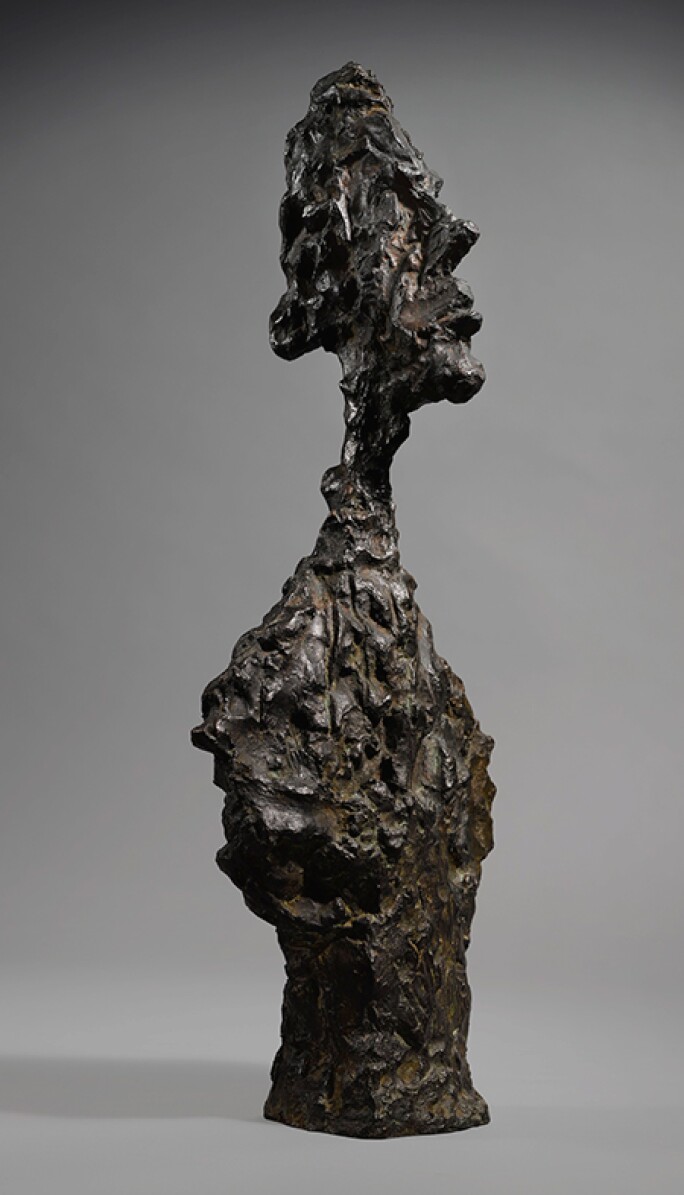S culptural and personal metamorphoses are a connective thread throughout the sculptures offered in the upcoming Impressionist & Modern Art Evening and Day Sale. As technology, society and artistry evolved at the turn of the 21st century, many artists turned to tales of antiquity to examine themes of mutability, love, violence, power and transformation. Ovid’s Metamorphoses, one of the most influential works in Western culture, permeates theories of art and has served as a source of inspiration for leading authors and artists for centuries.
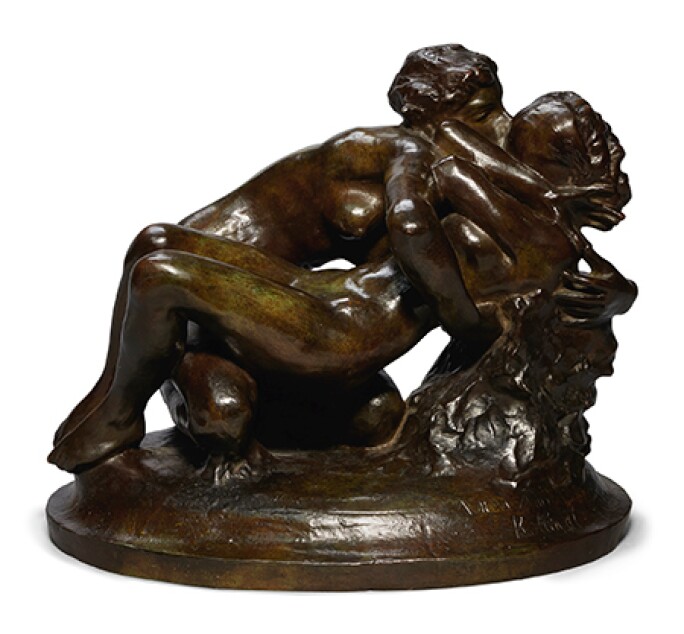
Many of Auguste Rodin’s greatest masterpieces are depictions of various tales from Metamorphoses and Dante’s Inferno, which in turn drew inspiration from Ovid’s epic poem. The culmination of Rodin’s depictions of these tales is his monumental bronze portal The Gates of Hell. Les Metamorphoses d’Ovide and Le Baiser are the pinnacles of this synthesis and epitomize this source text. Not only do the works directly harken to Metamorphoses, but both were created for this magnum opus portal. Les Metamorphoses d’Ovide depicts a passionate embrace between two lovers and was conceived during the most prolific period of Rodin’s career, as well as during a period of pronounced love and eroticism in the artist’s life and work. It was during this period that Rodin met his mistress, Camille Claudel, an experience that at once stirred great suffering and great passion. Rather than replicate any particular legend, the sculpture represents more generally many of the lovers captured in Ovid’s epyllion and is closely related to other sculptures, such as Daphnis and Lycenion (1885) and Cupid and Psyche (1886), also tales taken from Metamorphoses. Le Baiser, however, was intended for the left side of the gate and specifically portrays the ill-fated lovers Paolo and Francesca from Dante’s Inferno who were murdered and doomed to spend eternity in an embrace because of their adulterous passion.
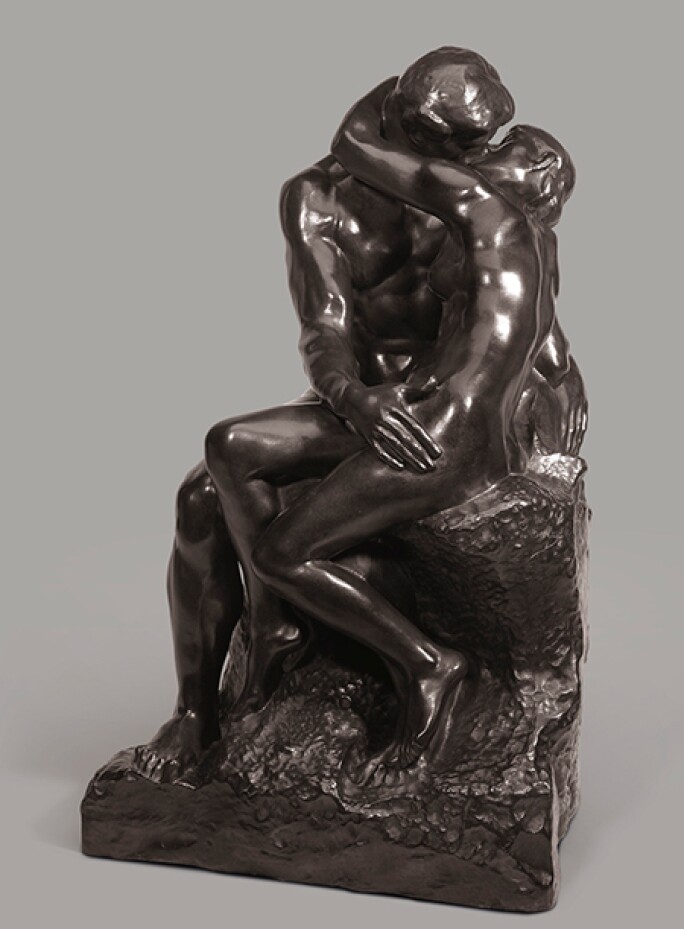
Like Rodin, Jean Arp constructed works directly linked to Metamorphoses, but he would create these connections via his titles rather than overt depictions of a given scene. At a time when he was titling his works Amphore des étoiles, Souvenir du pays d'Héraclès, Daphné, and Les trois grâces, Arp bestowed Entité ailée with the globular forms of Cyclades, as well as the power and the fervor of a Victoire de Samothrace. Arp observed that "from Impressionism onwards, art has turned irrevocably towards the disintegration of the human figure. A reaction was inevitable. For me, it is not about a return to a forgotten realism, though I have a strong need to create, and to create more than just the 'human concretions' of days gone by, but rather a mythical sculpture which takes the form of a head or a torso. Is mythical the right word? Indeed, we are talking about divinity, but it is more of a human divinity, as the sages and poets have always upheld. Hesiod, for example, who positions man at the centre of the universe. This is my sculpture today" (Jean Arp, L'Invention de la forme (exhibition catalogue), Fonds Mercator, Antwerp; Palais des beaux-arts, Brussels, 2004., p. 24).
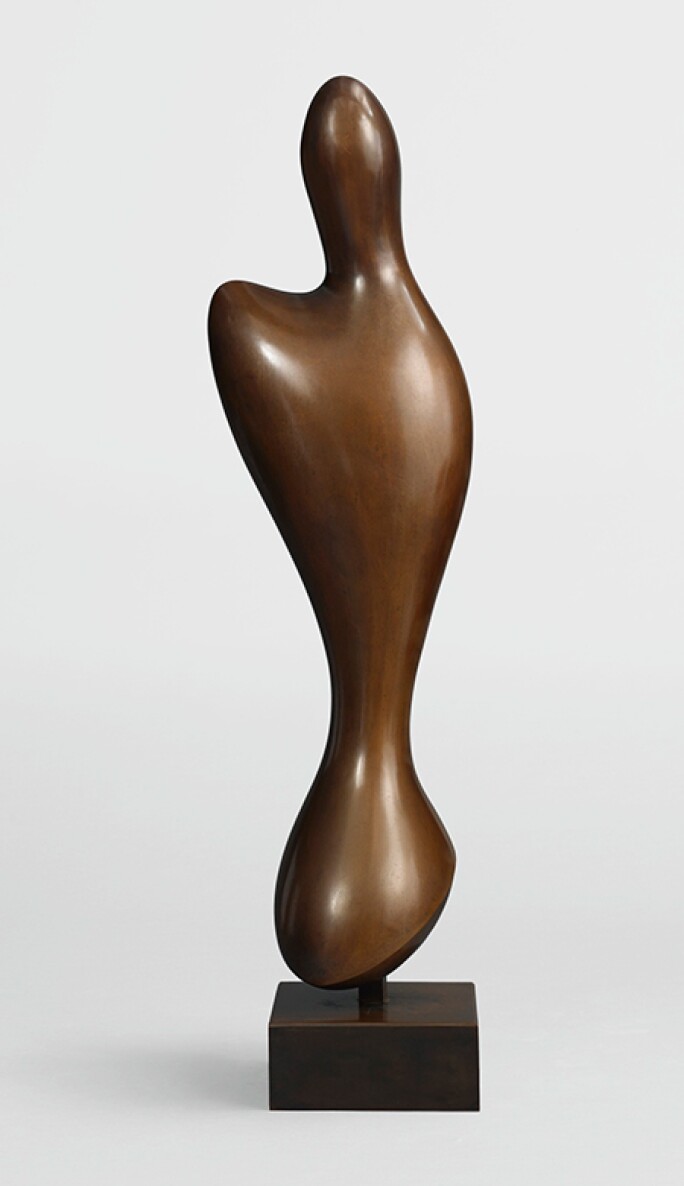
Just as Arp took a more abstract technique to represent Metamorphoses, Aristide Maillol eschewed orthodox approaches of representation in his creations of figural narratives. Torse Debussy is closely related to his Monument à Claude Debussy (1930), which Maillol created as a tribute to the great French composer Claude Debussy. For Torse Debussy, rather than faithfully depict his subject’s likeness, Maillol chose to cast a female figure as a personification of Debussy's genius and music. The gravitas of the figure in quiet contemplation evokes the harmony of the composer's work. The female nude had long been used as a compelling allegorical tool for artists often representing the symbolic muse, but the subject assumed a central position in Maillol’s personal style, with the artist choosing to render the female form both allegorically and naturalistically.
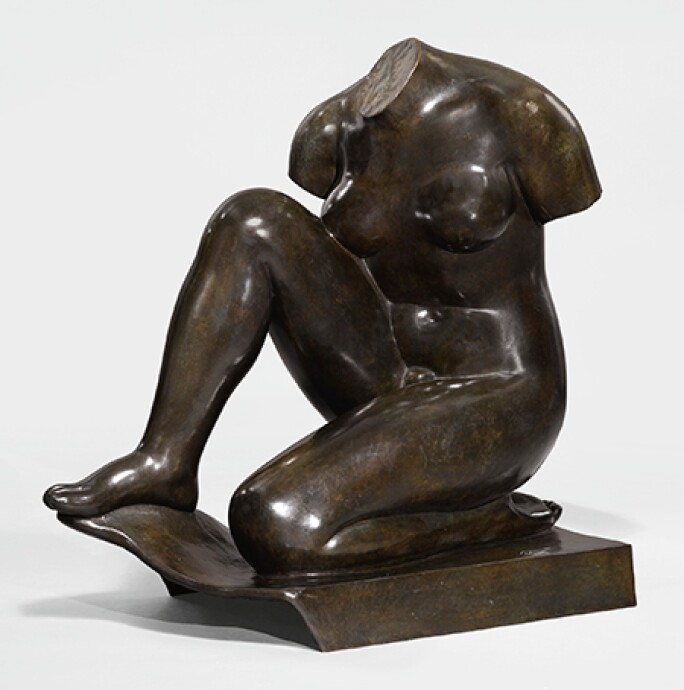
ARISTIDE MAILLOL, TORSE DEBUSSY, CONCEIVED IN 1930. IMPRESSIONIST & MODERN ART DAY SALE. ESTIMATE $600,000–800,000.
Alberto Giacometti was similarly concerned with not only Metamorphoses but also the more everyday evidence of Metamorphoses, which he explored via his serial execution of the same subject matter, namely his brother Diego. Giacometti’s extraordinary Buste de Diego is a robust personification of the Existentialist movement during the heated years of the Cold War. Of all his representations of the human figure, this bust is without question one of Giacometti's most formally radical and visually engaging sculptures. This imposing figure, parting his lips as if he is about to speak, embodies the anticipation of a moment yet to be realized. Alberto’s choice of his brother Diego as the subject of some of his most significant sculpture was based on their close relationship, which enabled Alberto to study and convey the vulnerability of aging and change: "He's sat for me thousands of times," Alberto Giacometti said. "When's he's sitting there, I don't recognize him. I like to get him to sit, so as to see what I see" (Yves Bonnefoy, Alberto Giacometti, A Biography of His Work, Paris, 1991, pp. 140). Alberto relied on an intensely hands-on process for this sculpture to create the indentations and the folds of Diego's jacket and in the sharp bridge of his nose. "Each of these nebulous undergoing perpetual metamorphosis seems like Giacometti's very life transcribed in another language," Jean-Paul Sartre wrote when observing the artist at work on his sculptures in his studio (reprinted in Alberto Giacometti, The Origin of Space (exhibition catalogue) Kunstmuseum Wolfsburg & Museum der Moderne Mönchsberg, Salzburg, 2010-11, p. 233).
